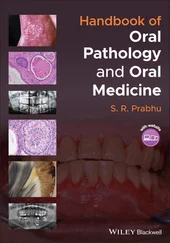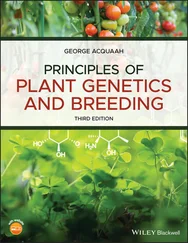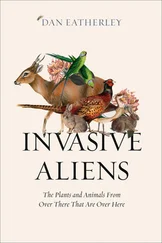Description: Fourth edition. | Hoboken : Wiley‐Blackwell, 2020. | Includes bibliographical references and index.
Identifiers: LCCN 2019051991 (print) | LCCN 2019051992 (ebook) | ISBN 9781118893869 (paperback) | ISBN 9781118893821 (adobe pdf) | ISBN 9781118893852 (epub)
Subjects: LCSH: Plant diseases. | Phytopathogenic microorganisms–Control. | Plant‐pathogen relationships.
Classification: LCC SB731 .D5 2020 (print) | LCC SB731 (ebook) | DDC 632–dc23
LC record available at https://lccn.loc.gov/2019051991LC ebook record available at https://lccn.loc.gov/2019051992
Cover Design: Wiley
Cover Image: Confocal microscopy image of a GFP‐labelled strain of the cereal eyespot fungus Oculimacula colonizing a wheat coleoptile. Source: Bowyer et al. 2000.
Plant pathology is an applied science concerned primarily with practical solutions to disease problems in agriculture, horticulture, and forestry. The study of plant disease and the development of methods for its control continue to be vital elements in the drive to improve crop productivity and ensure global food security. Projected world population growth and the impacts of climate change make this a priority. From a more strategic perspective, the experimental analysis of the interactions between plants and pathogens has become fertile territory for scientists interested in emerging areas of plant biology, including recognition and response systems, signal pathways, and innate plant immunity. The use of molecular genetic techniques has provided new insights into how pathogens cause disease and how plants defend themselves against attack. In turn, this new understanding is suggesting novel ways in which plant disease might be controlled.
This book provides an introduction to the main elements of plant pathology, including the applied aspects of disease identification, assessment and control, and fundamental studies of host–pathogen interactions. The aim is to place the subject not only in the context of agricultural science but also in the wider spheres of ecology, population biology, cell biology, and genetics. The impact of molecular biology and genomics on the diagnosis and analysis of plant disease is a recurrent theme.
A large number of people have helped me in the production of this new edition. First, I should acknowledge the invaluable help of many of my colleagues at Rothamsted Research who have generously provided advice, assistance, and materials for use in the book. They include Kim Hammond‐Kosack, Jason Rudd, Kostya Kanyuka, Nicola Hawkins, Ana Machado, Bart Fraaije, Jon West, Stephanie Heard, Anastasia Sokolidi, Kevin King, John Jenkyn, Roger Plumb, James Bell, David Hughes, Mike Adams, Graham Shephard, and Sally Murdoch. Joe Helps advised on mathematical modeling as well as replotting data. The library staff, Tim Wales, Catherine Fernhead, and Chris Whitfield, helped with tracing publications and scanning figures. Special thanks are due to Lin Field and Sheila Bishop who supported me as a visiting worker in the Biointeractions and Crop Protection department. Numerous others in the plant pathology and crop protection community have also supplied images, articles, advice, and data for use in figures and tables, including Bruce McDonald, Mike Coffey, George Sundin, Pamela Gan, Richard O'Connell, Petra Boetink, Yaima Arocha‐Rosete, Geert Haesaert, David Cooke, Paul Birch, Diane Saunders, Judith Turner, Moray Taylor, Sarah Holdgate, Nicola Spence, Ana Lopez, Hans Cools, Mike Davey, Jurriaan Ton, Stephen Rolfe, Paul Bowyer, Clive Brasier, Joan Webber, John Mansfield, Lili Huang, Victoria Routledge, Lucy Carson‐Taylor, Jason Pollock, Dierdre Haines, David Whattoff, Graham Matthews, Haydn Beddows, Dennis Gonsalves, and Malcolm Briggs. Thanks go to Holly Regan‐Jones for her skilful copy editing and Dave Gardner who re‐drew many of the Figures. Vimali Joseph provided vital support during the final production process. My appreciation should also be extended to previous colleagues at the University of Nottingham, especially Alison Daniels and the late Brian Case, who took many of the studio photos featured in this edition. Space does not allow me to acknowledge the many other colleagues who agreed to the use of published results.
Finally, thanks are also due to my daughter Maria Gabriella, whose grasp of digital technology greatly exceeds my own, and my wife Adélia, not only for her forbearance throughout the time taken to complete this project but also for her active contribution searching out all manner of useful information on the internet.
John A. Lucas January 2020
ABAAbscisic acidAUDPCArea under disease progress curveBCABiological control agentCDAControlled droplet applicationCDPKCalcium‐dependent protein kinaseCKCytokininCWDECell wall‐degrading enzymeDAMPDamage‐associated molecular patternDSSDecision support systemEHMExtrahaustorial membraneELISAEnzyme‐linked immunosorbent assayETIEffector‐triggered immunityGAGibberellic acidGLAGreen leaf areaGPSGlobal positioning systemGWASGenome‐wide association studiesHGTHorizontal gene transferHIGSHost‐induced gene silencingHLBHuanglongbing disease of citrus, also known as citrus greeningHRHypersensitive responseHRGPHydroxyproline‐rich glycoproteinHrpHypersensitive response and pathogenicityHSTHost‐specific toxinIAAIndole acetic acidIPPCInternational Plant Protection ConventionISRInduced systemic resistanceJAJasmonic acidLAMPLoop‐mediated isothermal amplification assayLGTLateral gene transferLPSLipopolysaccharideLYDLethal yellowing disease of coconutsMAMPMicrobe‐associated molecular patternMAPKMitogen‐activated protein kinaseNDVINormalized difference vegetation indexNGSNext‐generation sequencing, also known as high‐throughput sequencingNLRFamily of receptor proteins characterized by nucleotide‐binding site and leucine‐rich repeat domainsNONitric oxideNRPSNonribosomal peptide synthasePALPhenylalanine ammonia lyasePAMPPathogen‐associated molecular patternPCDProgrammed cell deathPCRPolymerase chain reactionPGPolygalacturonasePGIPPolygalacturonase‐inhibiting proteinPKSPolyketide synthasePRAPest risk analysisPRRPattern recognition receptorPTIPAMP‐triggered immunityQTLQuantitative trait locusREMIRestriction enzyme‐mediated integrationRIPRibosome‐inactivating proteinRLKReceptor‐like kinaseRLPReceptor‐like proteinROSReactive oxygen speciesRT‐PCRReal‐time polymerase chain reactionRUERadiation use efficiencySASalicylic acidSARSystemic acquired resistanceSIGSSpray‐induced gene silencingSNPSingle nucleotide polymorphismT3SSType 3 secretion systemUAVUnmanned aerial vehicleWRKY(pronounced worky) Family of transcription factors containing a WRKY amino acid domain
About the Companion Website
This book is accompanied by a companion website:
The URL is www.wiley.com/go/Lucas_PlantPathology4 

The website includes:
Figures from the book
We see our cattle fall and our plants wither without being able to render them assistance, lacking as we do understanding of their condition.
(J.C. Fabricius, 1745–1808)
The health of green plants is of vital importance to everyone, although few people may realize it. As the primary producers in the ecosystem, green plants provide the energy and carbon skeletons upon which almost all other organisms depend. The growth and productivity of plants determine the food supply of animal populations, including the human population. Factors affecting plant productivity, including disease, therefore affect the quantity, quality, and availability of staple foods throughout the world. Nowadays crop failure, due to adverse climate, pests, weeds, or diseases, is rare in developed agriculture, and instead there are surpluses of some foods. Nevertheless, disease still takes a toll, and much time, effort, and money are spent on protecting crops from harmful agents. In developing countries, the consequences of plant disease may be more serious, and crop failure can damage local or national economies, and lead directly to famine and hardship. Improvements in the diagnosis and management of plant disease are a priority in such instances. Furthermore, the pressures on plant productivity are increasing. The area of cultivated land available per person on the planet declined from around 0.4 ha in the 1960s to less than 0.3 by the year 2000 (FAO data), and as the human population continues to multiply the area will further decrease.
Читать дальше













